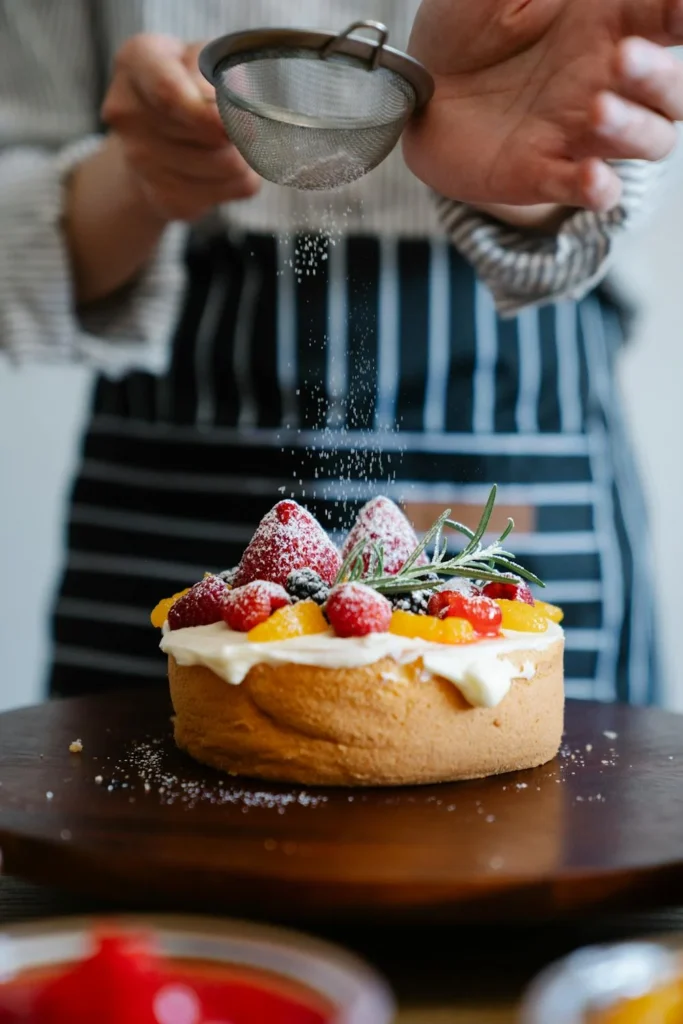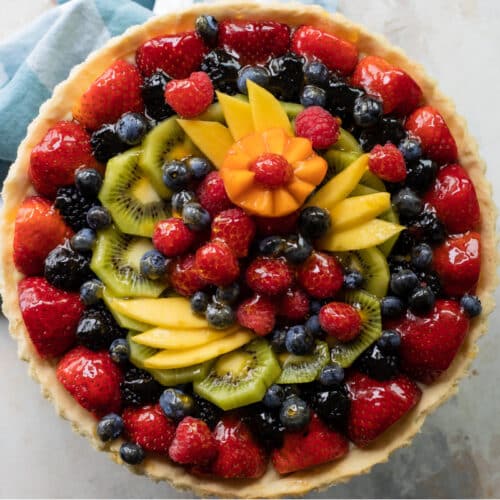There’s something inherently elegant about a fruit tart. With its golden crust, velvety custard, and vibrant medley of fresh fruit, it’s more than just a dessert—it’s a celebration of color, taste, and creativity. Whether you’re preparing one for a dinner party, a weekend family treat, or just because you love baking, a fruit tart offers the perfect blend of indulgence and wholesome goodness.
In this guide, we’ll take a deep dive into what makes a fruit tart so special. We’ll explore its origins, its ingredients, the steps to make it, and even the health aspects that might surprise you.
A Brief History of the Fruit Tart
The fruit tart has roots in classic French patisserie, where the term “tarte aux fruits” has long described a crust-based dessert filled with pastry cream and topped with seasonal fruits. Over time, the concept spread across Europe and the world, with every culture adding its unique twist. From the almond-rich frangipane versions in Italy to the crisp cookie-like shells popular in the U.S., the variations are endless—but the essence remains the same.
Why the Fruit Tart is So Popular
The charm of the fruit tart lies in its versatility. It can be rustic or refined, simple or complex, and seasonal or evergreen. A tart is not just about taste—it’s a visual masterpiece, often adorned with glossy glazes and intricately arranged fruit slices.
Here’s why so many bakers and dessert lovers gravitate toward this dish:
- Visual appeal: It’s one of the most photogenic desserts.
- Flavor balance: The tartness of fruit contrasts perfectly with sweet cream and buttery crust.
- Seasonal flexibility: You can use whatever fruits are in season.
- Texture: It combines a crisp base, smooth filling, and juicy toppings.
Essential Components of a Classic Fruit Tart
While there are many creative variations, the traditional fruit tart consists of three key elements:
1. The Tart Crust (Pâte Sucrée)
This is the base of the dessert—firm, buttery, and just slightly sweet. It’s made with flour, butter, sugar, egg yolk, and a pinch of salt. Some variations include almond flour for added texture and richness.
2. Pastry Cream (Crème Pâtissière)
This rich and silky custard is the heart of the tart. Made from milk, eggs, sugar, cornstarch, and vanilla, it provides a smooth, creamy contrast to the crisp tart shell and juicy fruits. You can infuse it with citrus zest, liqueurs, or even coffee for variety.
3. Fresh Fruit Topping
The star of the show. Whether you prefer strawberries, kiwi, blueberries, mango, or figs, the fruit should be fresh and sliced thin for aesthetic appeal. A light glaze made from apricot jam or a fruit syrup helps the pieces stay fresh and shiny.
How to Make a Perfect Fruit Tart at Home
Creating a fruit tart from scratch might seem intimidating, but it’s quite doable with a bit of preparation and patience.
Ingredients for a 9-inch tart:
For the crust:
- 1 1/4 cups all-purpose flour
- 1/2 cup unsalted butter, cold and diced
- 1/4 cup powdered sugar
- 1 egg yolk
- 1–2 tbsp cold water
For the pastry cream:
- 2 cups whole milk
- 1/2 cup sugar
- 1/4 cup cornstarch
- 4 egg yolks
- 1 tsp vanilla extract
- 2 tbsp butter
For the topping:
- A mix of sliced strawberries, kiwi, blueberries, raspberries, or other seasonal fruits
- 1/4 cup apricot jam (for glaze)
Instructions:
- Make the crust: Combine flour and sugar in a bowl. Cut in the butter until it resembles coarse crumbs. Add the egg yolk and cold water to form a dough. Chill for 30 minutes.
- Blind bake the crust: Roll out the dough and press it into a tart pan. Line with parchment and fill with pie weights. Bake at 375°F (190°C) for 15 minutes, remove weights, and bake 10 more minutes until golden.
- Prepare the pastry cream: Heat milk in a saucepan. In a bowl, whisk egg yolks, sugar, and cornstarch. Gradually add the hot milk, return the mixture to the stove, and cook until thick. Stir in butter and vanilla. Chill before using.
- Assemble the tart: Spread pastry cream in the cooled crust. Artfully arrange sliced fruit on top. Brush with melted apricot jam for a glossy finish.
- Chill and serve: Refrigerate for at least one hour before serving for best results.

Variations on the Classic Fruit Tart
While the classic recipe is beloved, the fruit tart is a canvas for creativity:
- Mini Tarts: Make individual servings for parties or events.
- Chocolate Fruit Tart: Add a layer of ganache under the pastry cream for richness.
- No-Bake Tart: Use a graham cracker crust and whipped cream base for a quicker version.
- Savory Tart: Try a twist with goat cheese and roasted vegetables topped with figs or grapes.
The Nutritional Side of Fruit Tarts
Surprisingly, a fruit tart isn’t just indulgent—it offers nutritional value too, especially when made with fresh, unprocessed ingredients.
Health Benefits:
- Fruit content: Rich in vitamins, antioxidants, and fiber
- Dairy from custard: Provides calcium and protein
- Eggs and milk: Contain essential amino acids and healthy fats
However, moderation is key. The crust and custard do contain sugar and fat, so a slice or two makes a satisfying yet reasonable portion.
Tips for a Healthier Fruit Tart:
- Use whole wheat flour or almond flour for the crust
- Sweeten the custard with honey or maple syrup instead of refined sugar
- Use low-fat milk or plant-based alternatives
- Go heavy on berries, which are lower in sugar and high in antioxidants
Serving and Storing Your Fruit Tart
A fruit tart is best enjoyed within 24 hours of assembly. The crust can become soggy if left too long, especially with juicy fruits. Here’s how to handle leftovers:
- Refrigerate: Store in an airtight container
- Avoid freezing: It affects the texture of the cream and fruits
- Serve chilled: Bring out of the fridge 10–15 minutes before serving for best taste
When to Serve a Fruit Tart
The beauty of a fruit tart is that it fits virtually every occasion:
- Brunch: Adds elegance and freshness to your morning table
- Afternoon tea: Perfect alongside a cup of black or herbal tea
- Holiday meals: Offers a lighter dessert alternative to cakes and pies
- Birthdays and celebrations: Customize with names or edible flowers for a stunning presentation
Conclusion: The Perfect Blend of Taste and Elegance
A fruit tart is more than a dessert—it’s an experience. With its vibrant colors, satisfying textures, and blend of sweet and tart flavors, it has rightfully earned its place in the world of iconic desserts.
Whether you’re a seasoned baker or trying something new, making a fruit tart from scratch is a rewarding endeavor. It allows you to play with flavors, showcase seasonal produce, and indulge in something that feels both decadent and fresh. So gather your ingredients, take your time with the details, and enjoy the process. Your perfect fruit tart awaits.


Pingback: "Soda Drinks: 7 Refreshing Trends, Types, and Health Insights You Should Know" - topdeliciousrecipes.com
Pingback: "Meat with Vegetables: 7 Perfect Combinations for Flavor, Nutrition, and Versatility" - topdeliciousrecipes.com